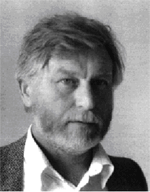 David French
David French
Biography
When Denys Finch-Hatton, the aristocrat and adventurer made famous by the film Out Of Africa, returned to England in the summer of 1911, fresh from purchasing his first farm in British East Africa, it was not only to fulfill his parents' request to attend the coronation of King George V and sundry society parties, but also to indulge his passion for the arts. Harley Granville Barker's production of A Midsummer Night's Dream was just the beginning. That summer, he also saw Debussy's L'AprTs midi d'un faune, choreographed by Nijinsky, and Stravinsky's Petrouchka. Both were presented by Serge Diaghilev's Ballet Russes, which was taking all of Europe by storm.
Petrouchka quickly became Hatton's favourite ballet, and Stravinsky, one of his favourite composers. He would bring recordings as gifts to his beloved Karen Blixen. Much is made of these cultural importations in the movie, most memorably in a scene where, through that early version of remote control, a length of string, some chattering monkeys are introduced, quite futilely as it turns out, to the charms of Mozart. Although perhaps not intended as such by the director, this scene would serve well to symbolize the uncomprehending and infuriated reactions across Europe by some of the more, shall we say, excessively cultivated balletomanes, to the radical innovations of the Ballet Russes in the years prior to the outbreak of hostilities.
That image of the outraged public, fed later by the legends of Dada, Surrealism, Bebop and Rock 'n Roll, is only one of the mythic burdens saddling poor Igor. I am very pleased to report that no theory enslaved to mythmaking disturbs the graceful unfolding of Stephen Walsh's Stravinsky: A Creative Spring: Russia and France, 1882-1934 (Knopf, 720 pages, $53.50 cloth, ISBN: 0679414843). Here we have finally revealed the quotidian Stravinsky, which every fan wants to know: the talented amateur taken under Rimsky-Korsakov's wing; the young aesthete attending World Of Art tea parties; the hard working composer and family man leading his gypsy caravan of an extended family in a perpetual search across Europe for sponsors, stages and audiences; the canny business man conducting his affairs by telegram and letter; the cutting-edge composer engaged with his contemporaries; the triumphant star partying until dawn with the glitterati of the day.
All these tableaux are presented with the kind of confident Tlan that comes only with a decade of research by a biographer who has also co-written a critical survey, The Music of Stravinsky (1993), and edited The New Grove Stravinsky (2000). What's more, the tableaux are blessedly free of that apostolic protectionism rubber-stamped on the culture by Robert Craft in his seemingly endless series of hero-worshipping memoirs. No doubt about it: this is the biography we've been waiting for. Monumental in its undertaking, exhaustive in its detail, acute in its analysis, both musical and psychological, and, last but not least, stylish and witty without being overbearingly clever. It's been a long wait but we could not have asked for more. ò
Gordon Phinn